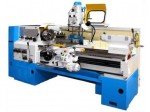Self-Powered Camera
Опубликовано 2015-05-01 22:00
 |
|
|
We have designed a simple pixel circuit, where the pixel’s photodiode can be used to not only measure the incident light level, but also to convert the incident light into electrical energy. A sensor architecture is developed where, during each image capture cycle, the pixels are used first to record and read out the image and then used to harvest energy and charge the sensor’s power supply. We have conducted several experiments using off-the-shelf discrete components to validate the practical feasibility of our approach. We first developed a single pixel based on our design and used it to physically scan images of scenes. Next, we developed a fully self-powered camera that produces 30x40 images. The camera uses a supercap rather than an external source as its power supply. For a scene that is around 300 lux in brightness, the voltage across the supercap remains well above the minimum needed for the camera to indefinitely produce an image per second. For scenarios where scene brightness may vary dramatically, we have developed an adaptive algorithm that adjusts the framerate of the camera based on the voltage of the supercap and the brightness of the scene. Finally, we have analyzed the light gathering and harvesting properties of our design and explain why we believe it could lead to a fully self-powered solid-state image sensor that produces a useful resolution and framerate. The research was funded by ONR. |
|
Publications"Towards Self-Powered Cameras," |
|
Оставлять комментарии могут только зарегистрированные пользователи. Войдите в систему используя свою учетную запись на сайте: |
||
 4 New Concepts in Technologies*
4 New Concepts in Technologies*